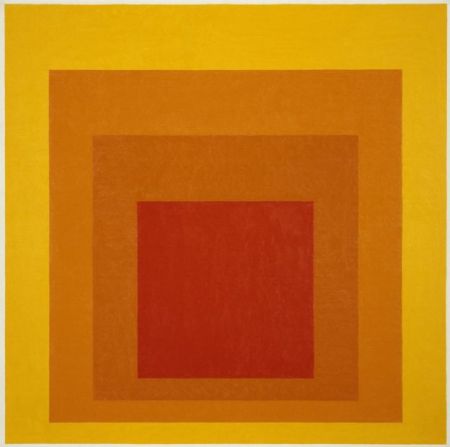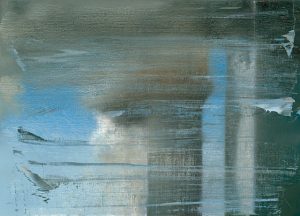Living in New York City, I sometimes feel myself getting consumed with this city’s art scene. There’s so much to do and see here, I can’t imagine any other city in the US coming close to my own with respect to art. However, after a recent weekend trip to Washington D.C., I can see how wrong my parochial views were, as it seems our nation’s capital has more to see than monuments and how money is made. There are some pretty amazing art museums in D.C. (most of which, are free), and I will never again brush off another US city’s art scene!
The Hirschhorn Museum and Sculpture Garden displays contemporary art, showing some of the best work created during the past 30 years. The museum holds 11,500 carefully selected works (including films). I really enjoyed “Josef Albers: Innovation and Inspiration” (currently on exhibit through April 11th), which is a retrospective of the artist’s 50-year career. His boldly colored images, many of which create optical illusions, are quite intriguing and mystically draw viewers (at least this viewer) into a trancelike state.
D.C.’s famed National Gallery of Art houses a comprehensive collection that includes European and American paintings and sculptures, photographs and works on paper. While I didn’t get to see this museum while in D.C., apparently, the building is “absolutely stunning.” The museum’s Sculpture Garden includes modern and contemporary art (as well as a fountain turned ice rink during the winter).
 The Smithsonian Freer and Sackler Galleries are also worth a visit, exhibiting eclectic art from around the world. “Perspectives: Anish Kapoor,” located in the museum’s Arthur M. Sackler Gallery was probably my favorite thing to see in all of D.C. Maybe I’m overly enthused by contemporary Asian art, but I could stare at Kapoor’s “S-Curve” all day long. The polished steel pieces create an ongoing convex and concave wall, and I can’t really explain it, but this seemingly simple sculpture ends up revealing hidden complexities.
The Smithsonian Freer and Sackler Galleries are also worth a visit, exhibiting eclectic art from around the world. “Perspectives: Anish Kapoor,” located in the museum’s Arthur M. Sackler Gallery was probably my favorite thing to see in all of D.C. Maybe I’m overly enthused by contemporary Asian art, but I could stare at Kapoor’s “S-Curve” all day long. The polished steel pieces create an ongoing convex and concave wall, and I can’t really explain it, but this seemingly simple sculpture ends up revealing hidden complexities.
The Newseum, which documents journalism and the media through time, is also worth a visit (even though it’s not free – but each ticket is valid for two days). I know it’s not an art museum, but I found this museum to be extremely interesting and visually appealing. You can read the daily front page news from all 50 states – as well as those of nations around the world; there’s also a riveting wall of international front page headlines from the day after 9/11. The largest piece of the Berlin Wall outside Germany is also currently on display – as well as a photography exhibit containing pictures of international athletes.






 Mayor Bloomberg’s commissioner of
Mayor Bloomberg’s commissioner of 






